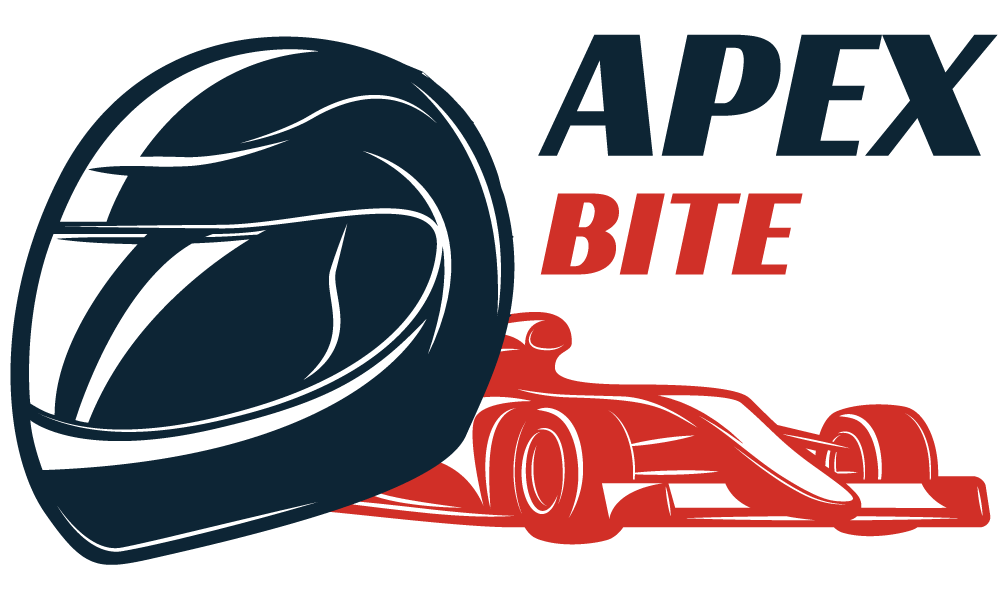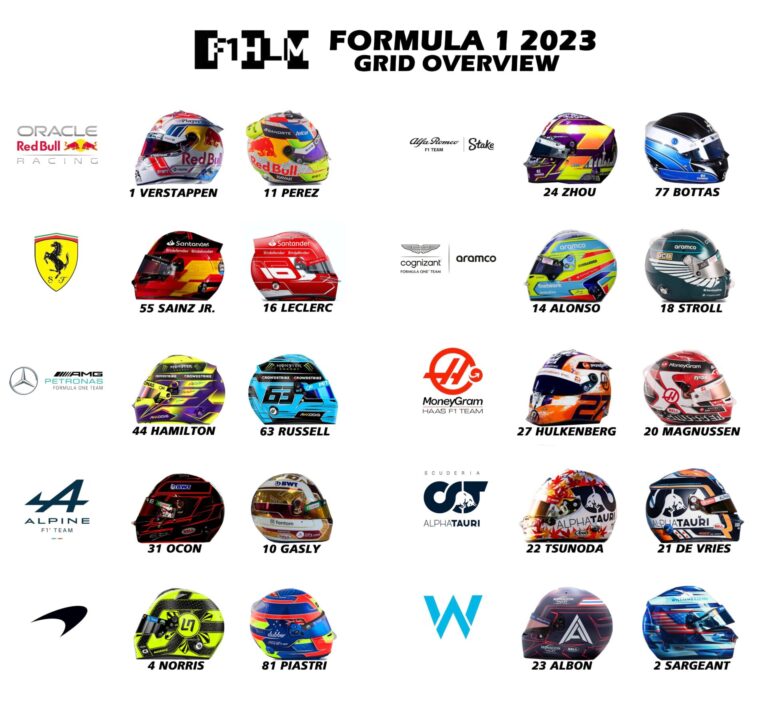Dive into the thrilling arena of Formula 1 helmets, an essential but often overlooked piece of the racing puzzle.
It’s more than just a piece of headgear; it’s a blend of innovation, performance, and safety that defines a driver’s success on the track.
Here’s why this matters:
- The average weight of a Formula 1 helmet is around 1.25 kg.
- The design of a Formula 1 helmet can take up to 3 months to complete.
- A Formula 1 helmet can withstand impacts of up to 225 km/h.
- The chin strap of a Formula 1 helmet must withstand a force of 1,000 kg for 30 seconds.
- The cost of a Formula 1 helmet can range from $5,000 to $40,000.
Think of a F1 helmet as the ultimate multi-tasker. Here are a few things it’s designed to do:
- Protect against high-speed impacts and flying debris
- Shield from intense heat and fire
- Reduce wind noise and enhance audio communication
- Provide visor options for changing light conditions
- Integrate cooling systems for driver comfort
Each of these elements plays a crucial role in the driver’s ability to perform at their best under intense conditions. By the end of this article, you will not only understand what goes into making a Formula 1 helmet, but also why it’s so important to the sport.
The History of the Formula 1 Helmet
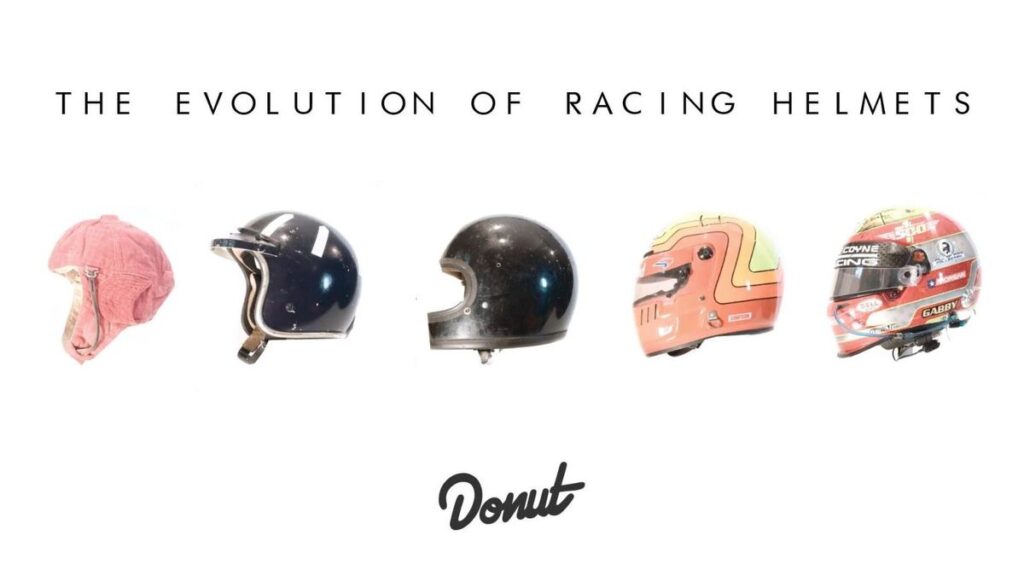
The Primitive Era (1950s-1970s)
During the initial years of Formula 1, the focus was more on the race, less on safety. Drivers wore leather caps or basic helmets made from cork, which offered minimal protection in the event of a crash. They wore goggles for eye protection, although these were often unreliable.
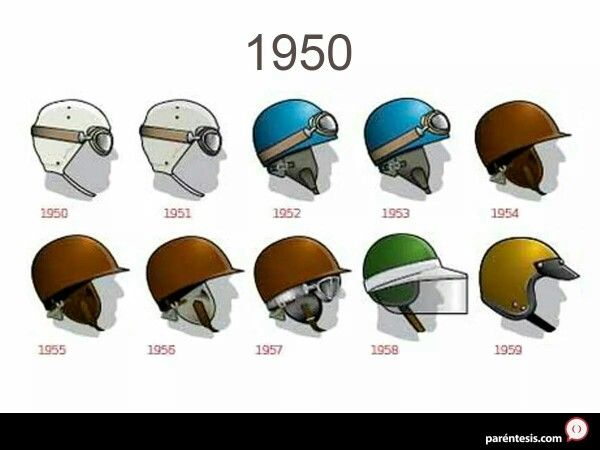
The Dawn of Full-Face Helmets (Late 1960s)
Enter the late 1960s, and we see the advent of the full-face helmet. It was introduced by driver Dan Gurney, who wanted more protection for his face after a series of serious accidents. This helmet had a single, clear visor which offered better vision and protection.

The Birth of Modern F1 Helmets (1970s-1990s)
Through the ’70s and ’90s, helmets continued to evolve with advancements in technology and materials. They were now made from polycarbonate, a material known for its strength and durability. Moreover, helmets became more aerodynamic, reducing pressure on the neck during high-speed races.
Note: The ’70s also saw the introduction of the HANS (Head And Neck Support) device which further improved driver safety.
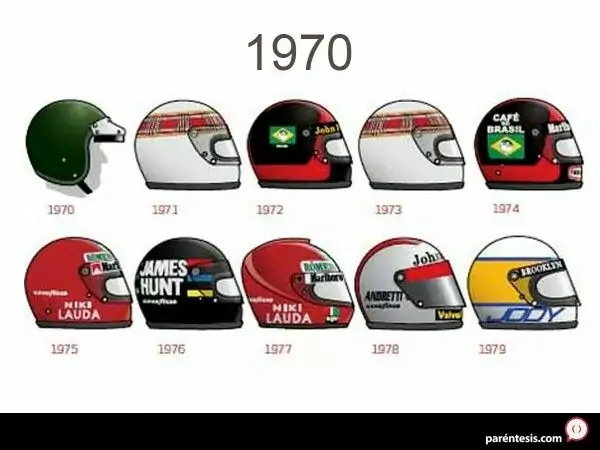

The Era of Customization (2000s-Present)
Over the last two decades, F1 helmets have become a canvas for drivers to express their personalities. Aside from the safety features, they have also become aesthetically vibrant, with drivers choosing distinct designs and colors.
Contemporary helmets are made from ultra-lightweight, high-tech materials like carbon fiber and Kevlar. They are subjected to rigorous safety tests, ensuring maximum protection for drivers.

Most icons F1 driver helmets

- Ayrton Senna: A legend; three F1 titles in yellow helmet. 1991 edition: eight pole positions, seven first-place finishes, final championship.
- Michael Schumacher: Record-holder; surpassed Juan Manuel Fangio’s 46-year crown in 2003.
- Sebastian Vettel: Youngest-ever champion in final-race showdown, 2010.
The Design of a F1 Helmet
When it comes to the design of a Formula 1 helmet, several key factors are taken into account. These factors ensure maximum safety, comfort, and visibility for the driver. The helmet is not just a protective gear; it is an emblem of the driver’s identity, and as such, every element of its design serves a purpose.
Materials and Construction
The construction of a Formula 1 helmet involves the use of advanced materials and technology. The outer shell is typically made from a combination of carbon fiber and Kevlar, materials renowned for their strength and lightweight properties. This shell is designed to withstand significant impact and reduce the chance of penetration from debris.
Inside the helmet, you’ll find a layer of energy-absorbing foam. This foam layer ensures that in the event of a collision, the force exerted on the driver’s head is significantly reduced. The interior lining is also designed for comfort and fit, often made from fire-retardant material to protect the driver from potential fire hazards.
According to the quality standards, the F1 helmet must:
- be fire-resistant and withstand outside temperatures of 700°C for more than 45 seconds
- inside temperature must remain below 70°C.
- The visor is also fire-resistant and withstand outside temperatures of 800°C
During the Bahrain Grand Prix in 2020, Roman Grosjean suffered a terrible accident. Grosjean was trapped in his car after being swallowed by a fireball. He spent 27 seconds trying to extinguish the fire. Grosjean’s racing helmet withstood the fire curtain.
The driver suffered severe burns to his hands. Roman’s eyebrows and eyelashes melted due to the high temperature, but his eyes and head were unharmed.
Design Features
Design-wise, a Formula 1 helmet has several specific features:
- Visor: Made from a polycarbonate material, the visor is designed to provide clear visibility while also protecting the driver’s eyes from debris and intense sunlight.
- HANS device compatibility: All Formula 1 helmets are designed to be compatible with the Head And Neck Support (HANS) device, a safety system that reduces the risk of head and neck injuries during a crash.
- Helmet livery: Each driver’s helmet features a unique livery or design. This is not just for aesthetic reasons but also helps fans and teams identify drivers on the track.
The Visor of a F1 Helmet
The visor of a Formula 1 helmet serves a multifaceted role in protecting the driver and enhancing their performance. It’s more than just a piece of transparent material.
It’s a crucial component that shields the driver’s eyes from debris, dust, and intense wind pressure, allowing the driver to maintain a clear line of sight throughout the race. Furthermore, the visor serves a vital function in ensuring the driver’s vision isn’t compromised due to varying weather conditions.
In terms of types, Formula 1 helmet visors differ according to weather conditions. There are essentially three primary types:
- Clear Visors: These are typically used for night races or when the weather is overcast.
- Tinted Visors: These are used in sunny conditions to reduce glare and protect the driver’s eyes from the intensity of the sun.
- Rain Visors: With an anti-fog layer, these are used in wet conditions to prevent the visor from fogging up due to the humidity and rain.
How Formula 1 Helmets are Tested
Understanding how Formula 1 helmets are tested provides crucial insight into the rigorous standards for safety and performance that these helmets must meet. You might be interested to know that Formula 1 helmets undergo a series of tests designed to simulate the various challenges they might encounter during a race.
The Impact Test
The first test is commonly referred to as the ‘Impact Test’. In this test, the helmet is subjected to impact from different angles to mimic potential crashes or collisions on the race track.
Historically, F1 helmets were often referred to as bulletproof owing to the crucial test each helmet must pass, which involves shooting a bullet at a speed of 519 km/h. However, a paradigm shift occurred in 2018 when the Italian company, Stilo, introduced a revolutionary, ballistic-tested helmet concept. This led to the official recognition of Stilo’s F1 helmets as bulletproof.
Following Felipe Massa’s crash during the qualifying round of the 2009 Hungarian Grand Prix, Stilo recognized the need to elevate the standards of driver head protection.
Consequently, the Stilo F1 helmet was engineered and tested to resist the impact of a 225g projectile traveling at a speed of 250km/h aimed at the driver.
In 2009, Felipe Massa was struck in the face by a loose coil which had come loose from the rear suspension of Rubens Barrichello’s car. This accident happened at 240 km/h.! Imagine what would have happened if Felipe Massa did not wear a helmet at that moment.
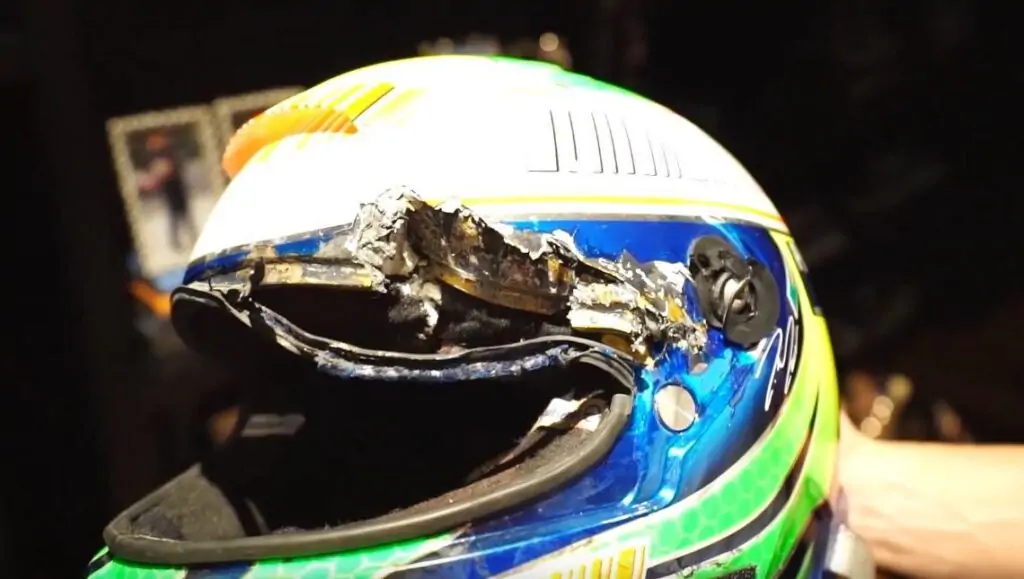
The Penetration Test
Next comes the ‘Penetration Test’. In this test, a sharp object is dropped onto the helmet from a specific height. The goal is to ensure that no object can penetrate the helmet and cause injury to the wearer. It’s a stringent test, pushing the helmet’s design and material to their limits. The helmet fails if the sharp object pierces it.
The Visor Test
The ‘Visor Test’ aims to test the helmet’s face shield’s resistance to potential flying debris during a race. During this test, the visor is shot with an air rifle to simulate a high-speed impact from debris. The visor must remain in place and cannot crack or be penetrated by the projectile to pass this test.
The Retention System Test
The final test, known as the ‘Retention System Test’, evaluates the helmet’s chin strap. The strap is subjected to a significant pulling force to ensure that the helmet stays secured on the head during an accident. The strap must not stretch or break, and the helmet must remain in position to pass this test.
Now you understand the rigorous testing procedures that Formula 1 helmets undergo. It’s a testament to their safety and the commitment of the sport to protect its drivers. As a potential racer or a fan, you can appreciate the level of safety these helmets bring to the dangerous, high-speed world of Formula 1.
The Cost of a Formula 1 Helmet
Formula 1 helmets are expensive due to the high safety standards, advanced technology, and unique customization required in their construction.
These helmets must adhere to strict safety measures, contributing to their high cost. A single Formula 1 helmet can cost between $4,000 and $6,000.
Drivers need multiple helmets per season due to wear and tear, bringing at least three different helmets to each race weekend.
The cost quoted is primarily for the helmet’s shell. There are additional costs for preparing the helmet for use on the track, such as custom padding, aero elements and designs, that can bring the cost to up to $40,000.
The choice of visor also adds to the cost, with tinted visors for sunny days and clear visors for night or rainy conditions.
Personal designs, often from graphic designers, are added to the helmets. The cost varies, with some designers accepting sponsorship space on the helmet as payment.
The final step, painting the helmet, requires precision and a protective coating to ensure durability and strength.
Formula 1 Helmet Design & Liveries
The helmet is the most visible part of a driver’s equipment. It’s the first thing you see when you look at a driver, and it’s the thing that identifies him.
One of the most captivating elements of Formula 1 racing is the stunning designs of the drivers’ helmets. These helmets are not merely pieces of safety equipment; they are both an extension of the team’s branding and a canvas for the drivers to express their personal style.
Regulations for F1 helmet designs
Many drivers – especially in open-topped cars such as Formula One cars – will have bright, vivid designs to help distinguish them from other drivers.
These designs will traditionally remain with the driver throughout their career, although in 2015 the FIA introduced rules limiting F1 drivers to one design per season to curb a recent trend towards regularly changing the design.
This rule was removed from the FIA regulations for the 2020 Formula One season following criticism from F1 drivers and fans.
Drivers Expressing Themselves
While the team’s colours are important, drivers also use their helmets to express their individuality. In many ways, the helmet becomes a personal signature, a visual representation of who they are as both a driver and a person.
- Some drivers use national symbols or colours to show their pride for their home country.
- Others might include personal symbols or motifs that have significant meaning to them.
- There are those who alter their designs each season, keeping fans guessing about what they will reveal at the start of each championship.
A Nod to the Past: Historical Helmet Designs
Throughout the history of Formula 1, there have been countless memorable helmet designs. Each one tells a story about the driver and the time in which they raced. Here are a few examples:
| Driver | Helmets Design |
|---|---|
| Ayrton Senna | The iconic yellow helmet with a green and blue stripe, representing the Brazilian flag. |
| James Hunt | His simple black helmet with two wide, horizontal stripes – one blue, one red. |
| Niki Lauda | The plain red helmet, earning him the nickname ‘The Red Baron’. |
As you can see, the design of a Formula 1 helmet is more than just about safety or team identity. It’s a piece of art, a statement, and a piece of history rolled into one.
Sources:
https://www.quora.com/How-heavy-is-an-F1-helmet
https://www.grixme.com/top-facts-f1-helmet/
https://gpx-store.com/blogs/magazine/how-strong-are-f1-helmets
